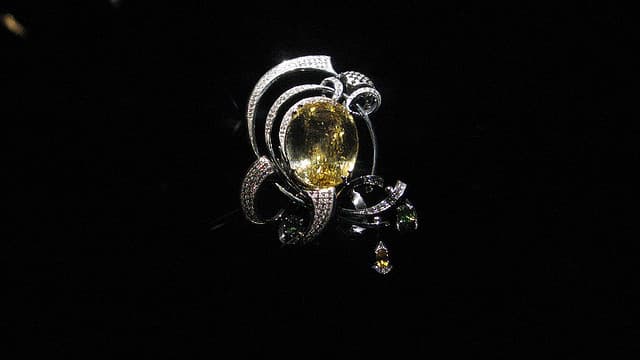How to Estimate Gem Weight in a Jewelry Setting
Although you can't weigh a gemstone in a jewelry setting, you can get a close approximation of the gem weight by determining its volume.
2 Minute Read
Step 1: Measure Your Gem
- Measure the gem carefully in every direction.
- Record all your measurements as well as the stone's shape. Take special note of its proportions.
- Finally, look up the specific gravity (SG) for the stone you're examining in our gem listings.
Step 2: Formulas for Estimating Faceted Gem Weight
Apply the proper formula for the gem based on its cut. The following formulas assume you're dealing with well-proportioned gems with a medium/thin girdle. If that's not the case, you'll have to adjust your results. See Step 4 below.
For all cuts except rounds and rectangular cushions, calculate the diameter as the average of the diagonal, length, and width.
Weight estimates are in carats.
Round
Diameter ✕ diameter ✕ depth ✕ SG ✕ 0.0018
Oval
Diameter ✕ diameter ✕ depth ✕ SG ✕ 0.0020
Square
Diameter ✕ diameter ✕ depth ✕ SG ✕ 0.0024
Square Cushion
Diameter ✕ diameter ✕ depth ✕ SG ✕ 0.0018
Square Step Cut
Diameter ✕ diameter ✕ depth ✕ SG ✕ 0.0023
Square with Cut Corners
Diameter ✕ diameter ✕ depth ✕ SG ✕ 0.0024
Rectangle
Length ✕ width ✕ depth ✕ SG ✕ 0.0026
Rectangle Step Cut
Length ✕ width ✕ depth ✕ SG ✕ 0.0025
Rectangle with Cut Corners
Length ✕ width ✕ depth ✕ SG ✕ 0.0026
Rectangular Cushion
Diameter ✕ diameter ✕ depth ✕ SG ✕ 0.0022 (NOTE: diameter = average of length and width)
Pear
Length ✕ width ✕ depth ✕ SG ✕ 0.0018
Heart
Length ✕ width ✕ depth ✕ SG ✕ 0.0021
Marquise
Length ✕ width ✕ depth ✕ SG ✕ 0.0017
Triangle
Length ✕ width ✕ depth ✕ SG ✕ 0.0018
Step 3: Formulas for Estimating Cabochon Gem Weight
Flat-bottomed cabs actually range from 0.0023 to 0.0029. Those with a bottom bulge range from 0.0024 to 0.0030. As a general rule, use the following formulas:
High-Domed Cabs
Length ✕ width ✕ depth ✕ SG ✕ 0.0026
Low-Domed Cabs
Length ✕ width ✕ depth ✕ SG ✕ 0.0029
Step 4: Adjusting Your Gem Weight Estimate
If the stone you're examining isn't well-proportioned or has a very thin or thick girdle, adjust your gem weight estimate as follows:
Girdle
Use an average of the girdle thickness. Don't base your reading on a bulge at the top of a heart or the point of a gem.
- Thin girdle, subtract 1% to 2%.
- Slightly thick, add 1% to 2%.
- Thick, add 3% to 4%.
- Very thick, add 5% to 6%.
- Extra thick, add 7% to 10%.
Pavilion Bulge
- Slight, add 3% to 5%.
- Noticeable, add 6% to 8%.
- Obvious, add 9% to 12%.
- Extreme, add 13% to 18%.
A long culet due to steep pavilion angles can add up to 5%.
Shape Outline
- Wide corners on cut corner squares and rectangles can decrease weight as much as 5%.
- For oval, pear, marquise, and heart cuts, wide wings or high shoulders can add up to 10%. Occasionally, straight shoulders will require a deduction of 1% to 5%.
- Marquise and (sometimes) pears will have a very short keel or none at all. This will reduce the weight by 1% to 3%.
- Triangles with straight sides will require a reduction of up to 10%.
International Gem Society
Related Articles
Gemstone Toxicity Table
Table of Gems Ordered by Crystal System
Emerald Origins: History and Identification
List of False or Misleading Gemstone Names
Never Stop Learning
When you join the IGS community, you get trusted diamond & gemstone information when you need it.
Get Gemology Insights
Get started with the International Gem Society’s free guide to gemstone identification. Join our weekly newsletter & get a free copy of the Gem ID Checklist!
